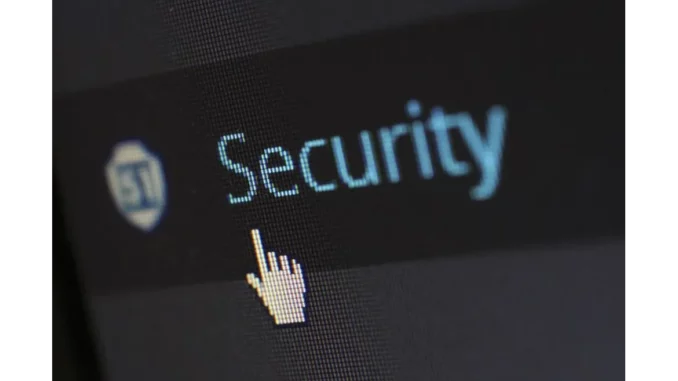
Summary
Cybersecurity: Safeguarding Personal Data in an Increasingly Connected World
In an era defined by digital connectivity, the internet serves as both a vital resource and a potential risk. As cybercriminals continually evolve their tactics to exploit vulnerabilities, the imperative to protect personal information has never been more pressing. This article delivers actionable strategies to fortify your digital presence against cyber threats, emphasizing the importance of device security, account protection, data backup, and network safety. Industry expert, Thomas Green, notes, “Proactive measures are essential for safeguarding personal data in today’s interconnected landscape.”
Main Article
The internet, often referred to as the “information superhighway,” provides unparalleled opportunities for communication, entertainment, and business. However, this connectivity also presents significant risks as cybercriminals, including hackers and scammers, relentlessly seek to exploit weaknesses to obtain sensitive information. As a result, ensuring the security of your personal data has become a critical concern.
Secure Your Devices: The First Line of Defence
Your electronic devices—be they smartphones, tablets, or computers—are the primary gateways to your personal information. Thus, maintaining their security is essential. A fundamental yet highly effective measure is to keep your security software, internet browsers, and operating systems up to date. These updates often contain patches for vulnerabilities that cybercriminals aim to exploit. Skipping these updates is akin to leaving your front door wide open.
For precise instructions on updating your software, refer to the developer’s website. Many companies offer options to sign up for email notifications or enable automatic updates. Overlooking these reminders is a risk that should not be underestimated.
Protect Your Accounts: Fortifying Your Digital Identity
Once your devices are secured, the next critical step is safeguarding your online accounts, particularly those containing sensitive information such as banking, email, and social media.
-
Create and Use Strong Passwords: A robust password serves as a formidable barrier against unauthorised access. Aim for a minimum of 12 characters, incorporating a blend of letters, numbers, and symbols. Alternatively, consider a memorable passphrase of random words, which can be harder to decipher.
-
Enable Multi-Factor Authentication (MFA): MFA provides an additional layer of security by necessitating two or more credentials for access. This could involve something you possess, like a code from an authentication app, or something inherent to you, such as a fingerprint scan.
-
Choose Security Questions Carefully: Steer clear of questions easily guessed or found in public records. Opt for questions only you can answer, or use arbitrary answers that you can recall.
Back Up Your Data: A Safety Net for Your Information
Data backup is essential for recovery in the event of a cyberattack, device failure, or other unexpected occurrences. Regular backups ensure the preservation of crucial files, photographs, and documents.
-
Cloud Storage: Services including Google Drive, Dropbox, and iCloud offer cloud-based storage solutions. While convenient, it is vital to investigate their privacy and security protocols before entrusting them with your data.
-
External Storage Devices: USB flash drives and external hard drives provide offline backup options, offering greater control over your data. Although they necessitate manual updates, they can be more reliable than cloud storage.
Protect Your Home Network: Securing Your Digital Perimeter
The security of your home network is a pivotal aspect of digital safety. Your router, which connects your devices to the internet, is a prime target for cybercriminals. To secure your network, change default passwords, enable network encryption, and regularly update your router’s firmware. For comprehensive guidance, consult resources on securing home networks.
Report Identity Theft: Taking Action When the Worst Happens
Despite meticulous precautions, identity theft can occur. If you suspect a breach of personal information, visit IdentityTheft.gov for advice on reporting and recovery. Prompt action can reduce damage and assist in regaining control over your identity.
Detailed Analysis
The growing reliance on digital platforms underscores the necessity for enhanced cybersecurity measures. As cybercriminals become more sophisticated, the economic impact of data breaches is projected to rise, affecting individuals and corporations alike. According to recent studies, global cybercrime costs are expected to reach $10.5 trillion annually by 2025, underscoring the financial ramifications of inadequate security.
Moreover, the interconnected nature of today’s economy means that data breaches can have cascading effects, impacting supply chains and consumer confidence. The need for robust cybersecurity strategies is not merely a personal concern but a broader economic imperative.
Further Development
As cyber threats continue to evolve, staying informed about the latest security trends and best practices is essential. Future developments in cybersecurity technology, such as advancements in artificial intelligence and machine learning, promise to enhance protective measures. Additionally, regulatory changes may influence the landscape of digital security, necessitating ongoing vigilance and adaptation.
Readers are encouraged to follow our coverage as we explore these topics and offer insights into emerging cybersecurity solutions and policy shifts.

